We often hear the phrase “work-life balance”, but what does it truly mean, and why should it matter to you? Essentially, maintaining a healthy work-life balance is the art of effectively managing your time, energy, and resources between work and the myriad other aspects of life: personal interests, family, friends, and self-care. It is a necessary juggling act that requires deft negotiation between your professional obligations and your well-being.
Why is this important, you may ask? Consider this: when you bear disproportionate stress from work without allowing yourself the space to breathe and recuperate, your overall health suffers. You may encounter symptoms of burnout—a severe outcome of a chronic lack of balance—that could manifest in always feeling exhausted, an inability to focus, and decreased productivity.
Do you know work-life balance is associated with better mental health and job satisfaction?
Indeed, the dangers of a poor work-life balance extend beyond the dissatisfaction and struggle you might feel. It seeps into your mental and physical health, your relationships, and even your performance at work which, ironically, is where the problem begins. Thus, it’s incumbent upon you not just as a professional, but as a person seeking a fulfilling and healthy life, to strive to maintain a healthy work-life balance.
What is Work-Life Balance
Work-life balance, in its simplest form, denotes the healthy balance that an individual needs between time allocated for work and other aspects of life like personal interests, family, and social or leisurely activities. It’s essentially an equation of healthy balance, where the value of work matches the value of non-work-related activities, creating harmony in your everyday life.
What does it look like in a practical sense? Picture this―you can complete your professional tasks within stipulated work hours and also have sufficient time for personal growth, recreational activities, and bonding with family and friends. Typically, it would mean keeping your professional and personal life separate, not allowing one to intrude into the other, ensuring a sense of overall fulfillment and peace.
It’s crucial to note that work-life balance is highly individualistic. It’s as diverse as the people seeking it. For someone, it might mean having time to go for a run every morning before work. For another, it could mean being there to pick up their children from school or being able to enroll in an evening class. The key is figuring out what work-life balance means to you, and taking steps towards achieving it.
Signs of Unhealthy Work-Life Balance
An unhealthy work-life balance may not announce its arrival with loud fanfare; rather, it subtly infiltrates your life in the form of crippling signs and symptoms. These markers of imbalance are often overlooked, but their recognition is essential to revitalizing both your personal and professional experiences.
Progressive exhaustion irrespective of the hours of sleep you may get is a stark sign of an unhealthy work-life balance. This persistent fatigue prevents you from performing optimally, both emotionally and intellectually, marring your overall quality of life. It’s not uncommon for this fatigue to evolve into physical ailments like frequent headaches or upset stomachs.
A tangible lack of engagement with either your work or personal life is another red flag. If you find your thoughts invariably drifting towards your heap of office emails during your child’s ballet recital or struggle to refocus your attention on the corporate strategy report while cooking dinner, it’s a clear signal of blurred boundaries between your personal and professional activities.
Are you frequently feeling overwhelmed? This pervasive feeling of being imprisoned by mounting pressures and ceaseless demands is emblematic of a skewed work-life balance. An ongoing sense of incongruity between your responsibilities and your capacity to fulfill them can lead to an unsustainable cycle of stress and burnout.
Paying heed to these signs is a critical step towards regaining the power to maintain a healthy work-life balance, fostering an enriching atmosphere that bolsters your well-being, both on the job and off.
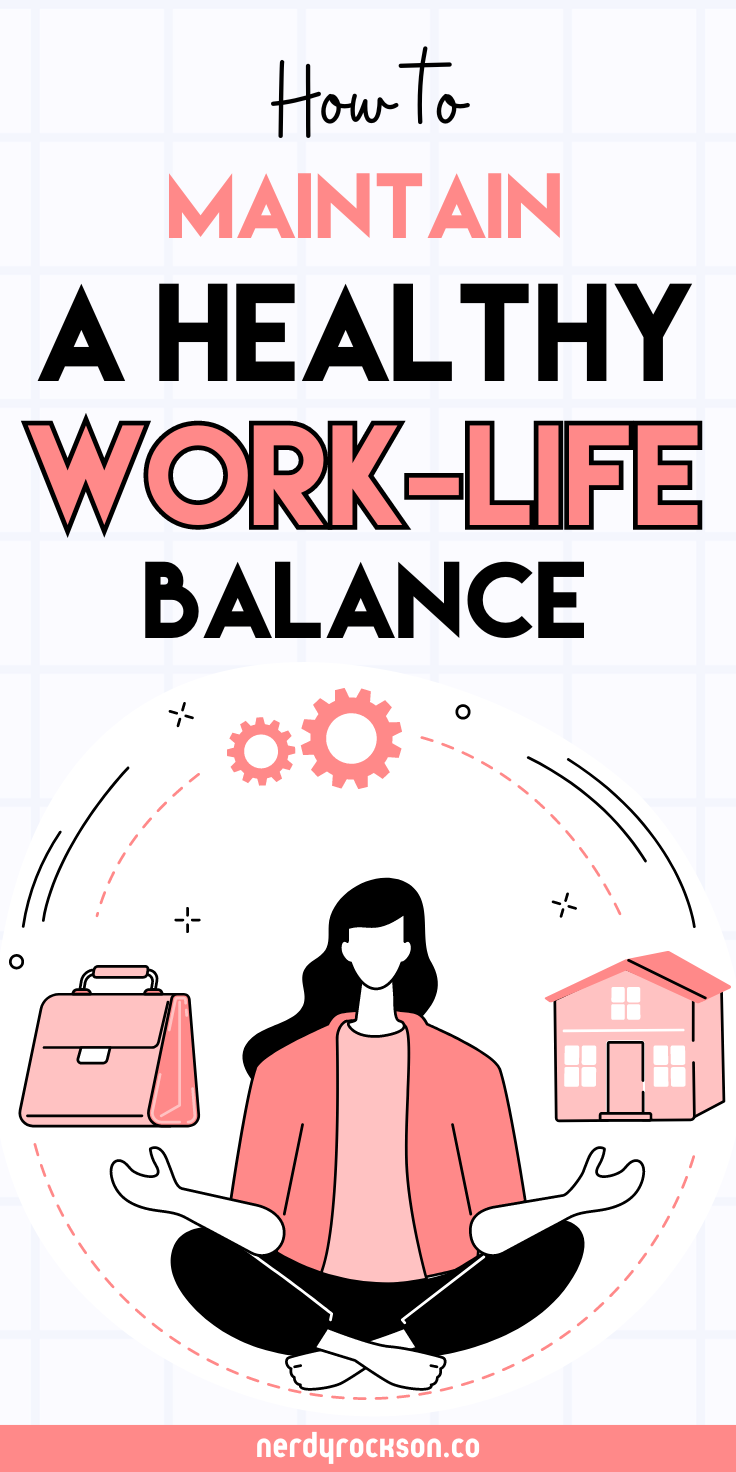
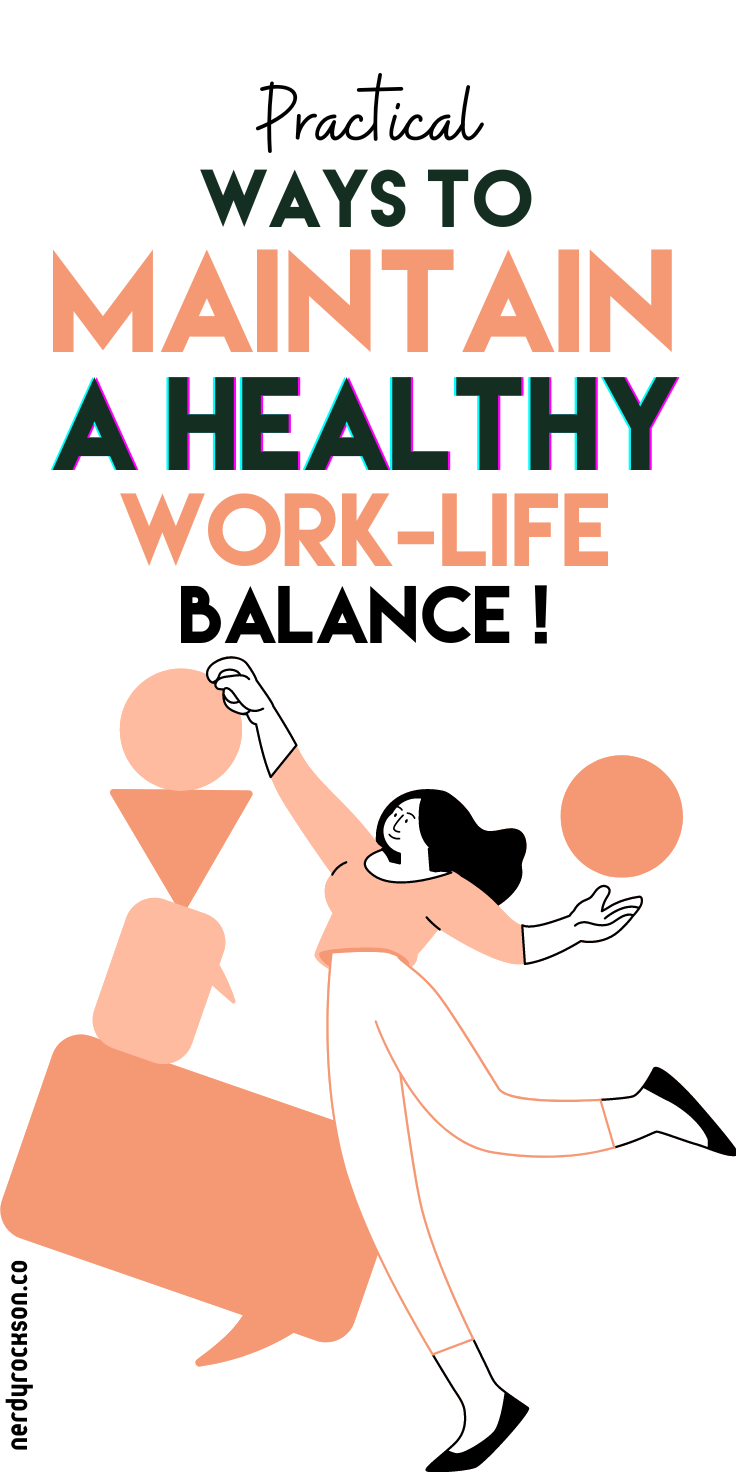
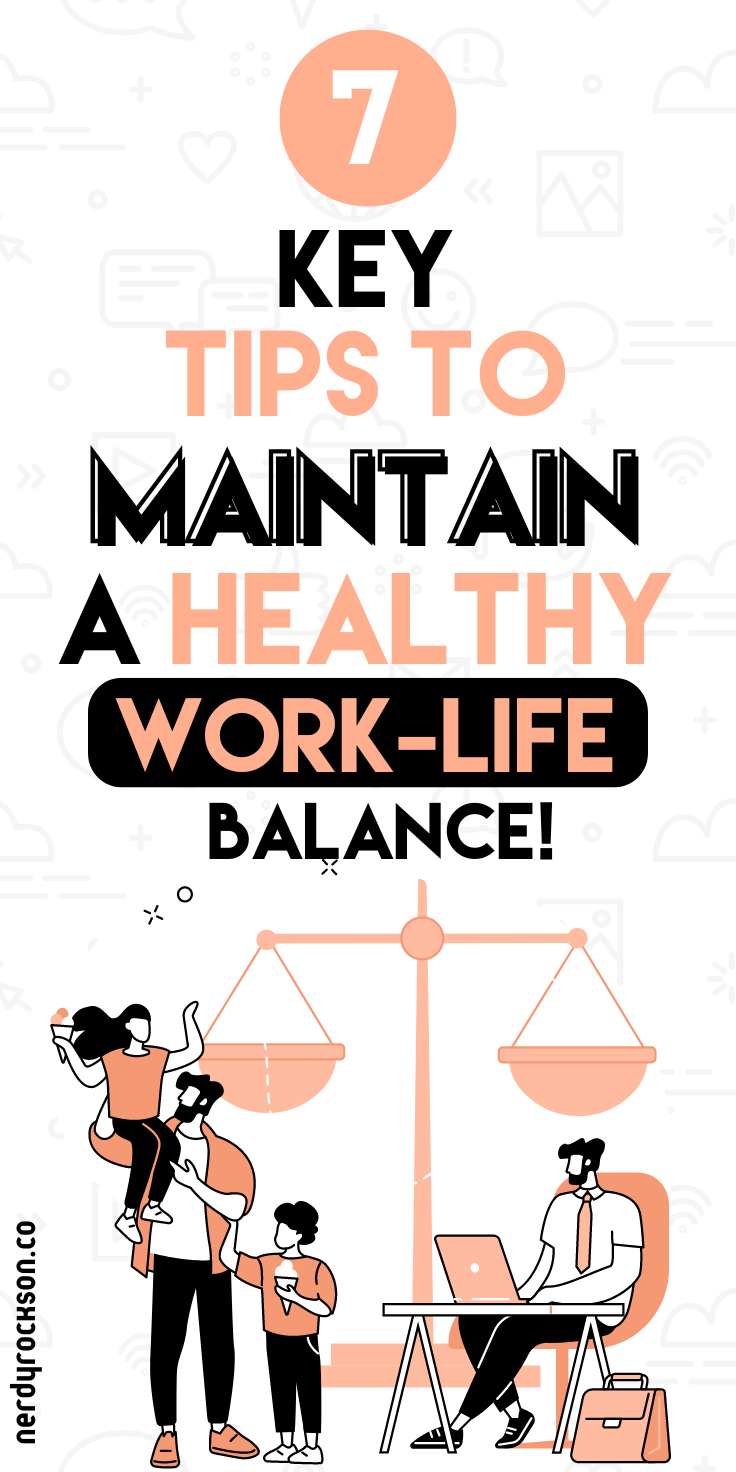
Impact of Unhealthy Work-Life Balance
Recognizing the toll that an unhealthy work-life balance can take on your life is the first step toward achieving a healthy balance. When you fail to maintain a healthy work-life balance, it can lead to a marked increase in stress levels, and physical health problems, as well as compromise your emotional and mental well-being.
Increased stress is one of the most prevalent side effects of an unbalanced work-life schedule. Stress can manifest in numerous forms such as feelings of overwhelm, difficulties in concentration, and the inability to stay organized. Additionally, prolonged periods of excessive stress can, unfortunately, lead to burnout. This phenomenon, often characterized by emotional exhaustion, cynicism, and reduced performance, professionally incapacitates countless individuals every year.
Apart from these emotional repercussions, the stress induced by an inadequate work-life balance deeply affects your physical health. This can include sleep disturbances, a weakened immune system, and, potentially more serious outcomes such as cardiovascular disorders. It is evident that the association between stress and physical health is no laughing matter and must be taken earnestly.
And, let’s not forget the slow but certain impact on one’s mental health. In the long run, an unhealthy work-life balance could lead to anxiety and even depression. The slippery slope from feeling overwhelmed to experiencing depressive symptoms can be a stealthy and gradual process. The cumulative effects of persistent work stress and personal strain can significantly affect your ability to enjoy life, both professionally and personally.
Therefore, it becomes abundantly clear that the impact of an imbalanced work-life dynamic goes well beyond just feeling “busy”; it seeps into and potentially undermines every aspect of your well-being. Thus, it’s vital to maintain a healthy work-life balance to foster sustained job performance and suitable personal growth. So, how can we accomplish this balance? Let’s explore some practical tips in the subsequent sections.
How to Maintain a Healthy Work-life Balance
The quest to maintain a healthy work-life balance may seem like a steep mountain to climb. However, employing a few key strategies can play a pivotal role in successfully reaching this peak:
1. Setting Boundaries
One of the most important steps you can take is setting clear boundaries between your work and personal life. This might involve designating specific hours of the day as ‘work time’ and standing firm on the principle that personal time should not be encroached upon by work-related matters, except in the case of emergencies. This clear demarcation serves as a safeguard against potential burnout.
2. Prioritizing Time
A key to maintaining a balanced life is understanding the necessity of prioritizing your time. This involves not just organizing your workday more efficiently, but also ensuring enough time is devoted to self-care, relaxation, and recreational activities. What’s more, it’s crucial to intentionally dedicate time to friends and family, as social connections enrich our lives and provide essential emotional support.
3. Prioritizing Self-care
Another effective method is prioritizing self-care. This includes ensuring a healthy diet, regular exercise, and adequate sleep. These elements not only improve physical health but also enhance mental well-being, making it easier to manage stress and maintain focus during work hours.
4. Using Time Management tools
Time management is also crucial in maintaining a healthy work-life balance. This involves planning and organizing work tasks efficiently to avoid last-minute rushes or working overtime. Using tools like calendars, to-do lists, or project management apps can help individuals stay on track and ensure they have time for non-work activities.
5. Flexibility
Flexibility is another key strategy. This could mean flexible work hours, working from home, or job sharing. These options allow individuals to tailor their work schedules to their personal needs and responsibilities, reducing stress and improving work-life balance.
6. Practicing Mindfulness
Mindfulness – the art of being present and engaging wholly in the current moment – is another effective strategy to enhance your work-life balance. It helps reduce stress levels, improve concentration, and create a calm mental space where you can respond thoughtfully rather than react hastily. Consider incorporating practices such as meditation, yoga, or mindful breathing exercises into your routine.
7. Seeking Support
Finally, seeking support when needed is vital. This could involve talking to a supervisor about workload concerns, seeking advice from a mentor, or using employee assistance programs. By reaching out for help, individuals can navigate work challenges more effectively and maintain a healthier work-life balance.
Remember, any strategies you implement must be sustainable and adapted to meet the unique demands of your lifestyle. Achieving a healthy work-life balance is a continual process, not a one-time task. Tailor these insights to best suit your needs and provide a foundation for holistic well-being.
Tools and Resources
Now, as we delve further into this guiding path towards achieving a healthy balance between professional pursuits and personal life, it is pertinent to draw your attention to the panoply of tools and resources available to assist you in maintaining a healthy work-life balance. Just as an artist employs many instruments to manifest their creativity, you too have a wealth of resources designed to facilitate efficient time management and foster well-being.
Productivity apps rank high among such resources, operating as virtual personal assistants to streamline your tasks efficiently and help you remain organized. Apps like ‘Asana’, ‘Evernote’, and ‘Trello’, to name a few, offer features ranging from to-do lists, calendar integrations, collaboration boards, and reminders, all designed to improve productivity whilst simultaneously freeing up time for personal endeavors and relaxation. Coupled with effective time-blocking strategies, these apps can become your allies in the quest to manage work and personal commitments effectively. Imagine real-time collaboration with colleagues, planning your daily tasks, and having a personalized organization right at your fingertips!
Furthermore, modern workplaces increasingly understand the value of adopting wellness programs, acknowledging that an employee’s holistic health significantly contributes to their productivity and overall company outlook. These programs could offer resources such as gym memberships, yoga classes, stress management workshops, or even initiatives encouraging healthy eating. As an employee, you should harness fully the benefits of such programs, as the journey to a balanced life isn’t just about managing your time efficiently, but also about investing in your physical and mental health.
Last, but not least, professional counseling services also hold a vital place in maintaining a balanced life. Therapists and counselors can not only provide an outlet for you to express your feelings and challenges but also deploy their professional expertise to devise customized strategies that complement your specific situation and challenges. This can include stress management techniques, helping set realistic goals, and providing guidance on how to handle specific work-life balance issues. Remember, seeking help is not a sign of weakness, it manifests your strength and commitment to pursue a healthy, balanced life.
The journey to maintain a healthy work-life balance is continuous, not a one-off task. It’s about consistently making choices that align with your values, priorities and what gives you fulfillment. And these tools and resources, when rightfully deployed, can be your compass guiding you through this journey.
Conclusion
Overall, maintaining a healthy work-life balance is not only crucial for improving overall health and well-being, but it can also lead to increased motivation, higher performance, and profound happiness. It is important to remember that achieving a healthy work-life balance is completely within your realm of control and is a realistic expectation rather than an unachievable ideal.
You don’t have to condense your life into a stressful flurry of work pressures and competing demands. The steps outlined in this article—setting boundaries, allocating time wisely, using time management tools, embracing mindfulness, and keeping an active lifestyle—are part and parcel of a holistic blueprint for integrating work and life.
It’s about recognizing your priorities, being clear about what is non-negotiable, and finally: being unafraid to draw a line in the sand. Remember: you are worth more than your productivity, and your value does not diminish with every hour you choose to spend away from work.
In the face of difficulties or when the going gets tough, there’s no shame in seeking professional help, whether it’s consulting a therapist, or a life coach, or even reaching out to your human resources department to discuss strategies and options for better work-life balance. But you can always start by implementing these steps one by one into your life, and pay attention to the results, no matter how small.
The key takeaway from all of this is that maintaining a healthy work-life balance is possible, and it can genuinely enhance both your personal life and your work environment. So, why not take that first step towards the balance you deserve? Go forth, explore, experiment, and here’s to a healthier, more balanced, more fulfilling life for you.
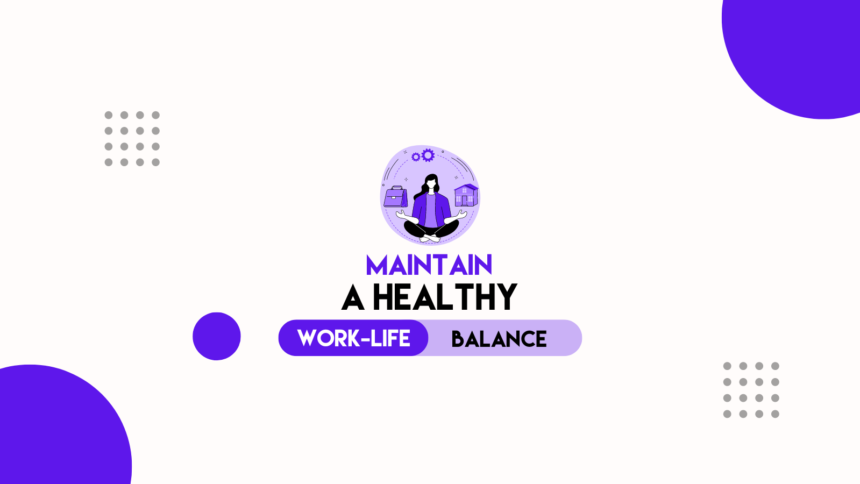





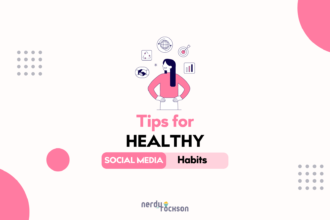
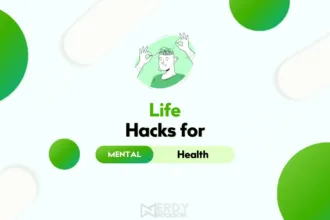


Stumbling upon this website was such a delightful find. The layout is clean and inviting, making it a pleasure to explore the terrific content. I’m incredibly impressed by the level of effort and passion that clearly goes into maintaining such a valuable online space.
pls tell what tool do you use for making thumbnails. i have been searching it for so long. still cant find where are they found. your thumbnail has dots, circles, shapes,etc.
I use Canva for all my graphics